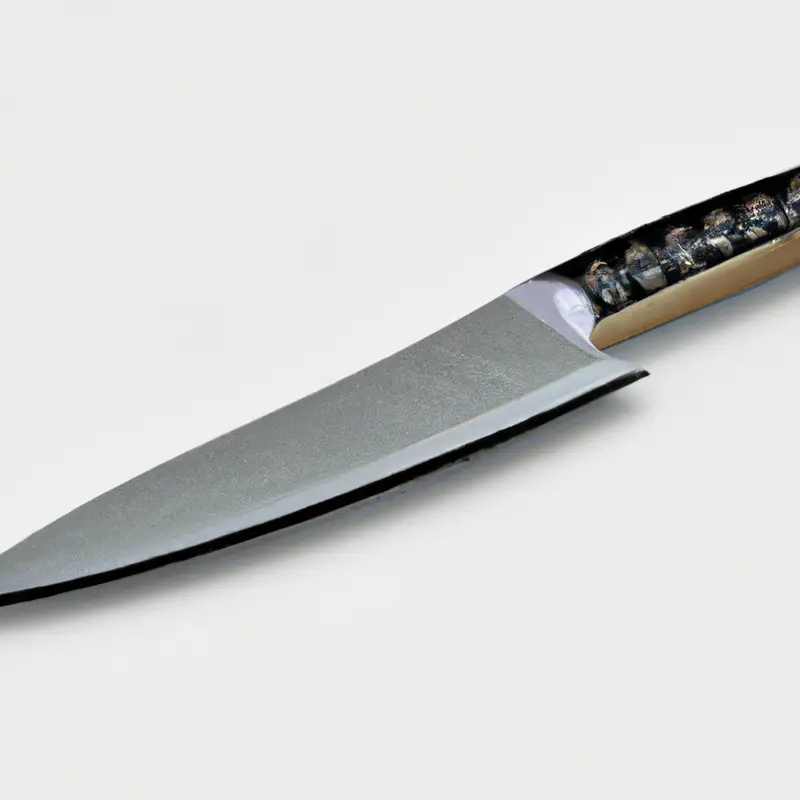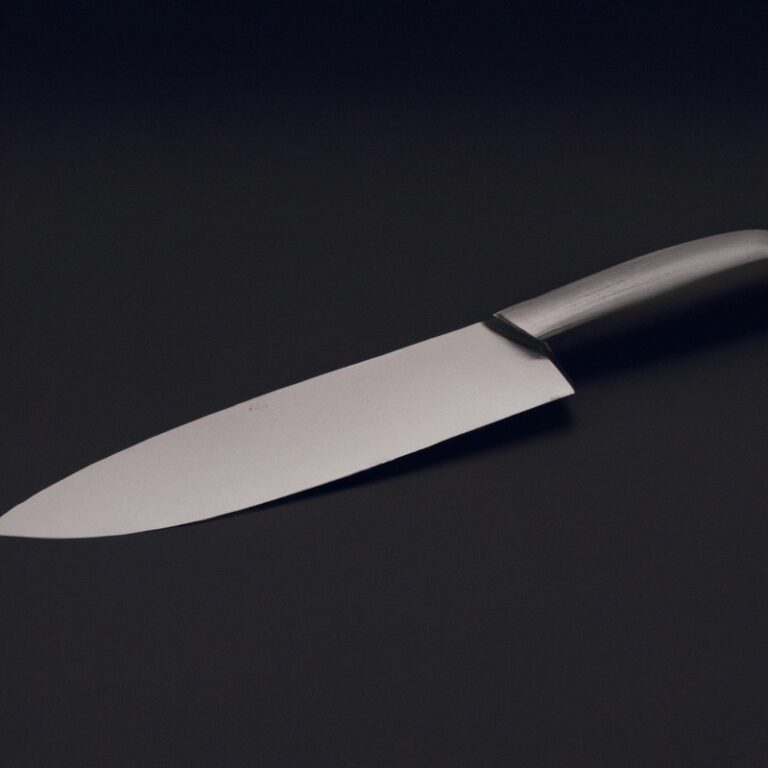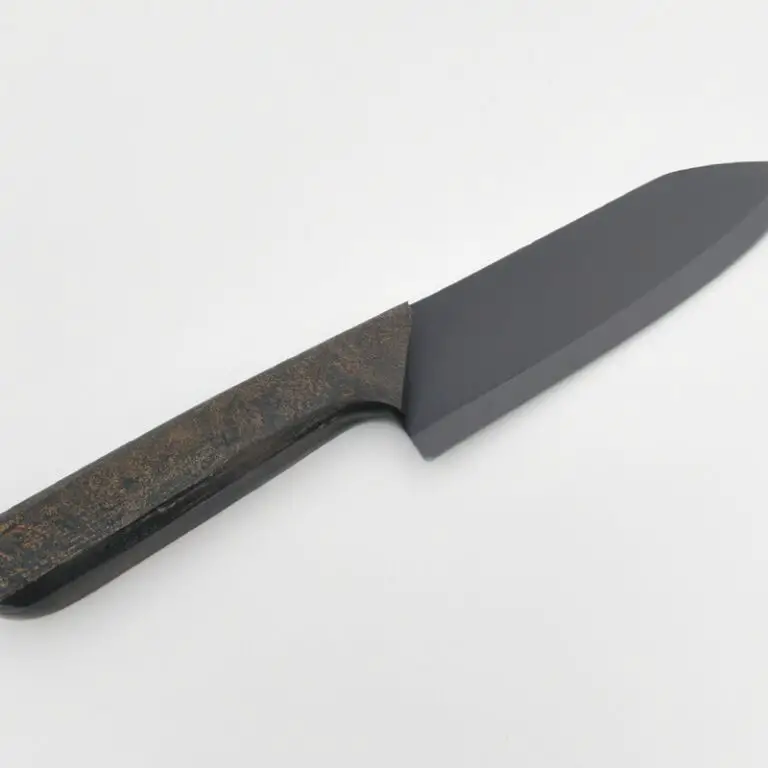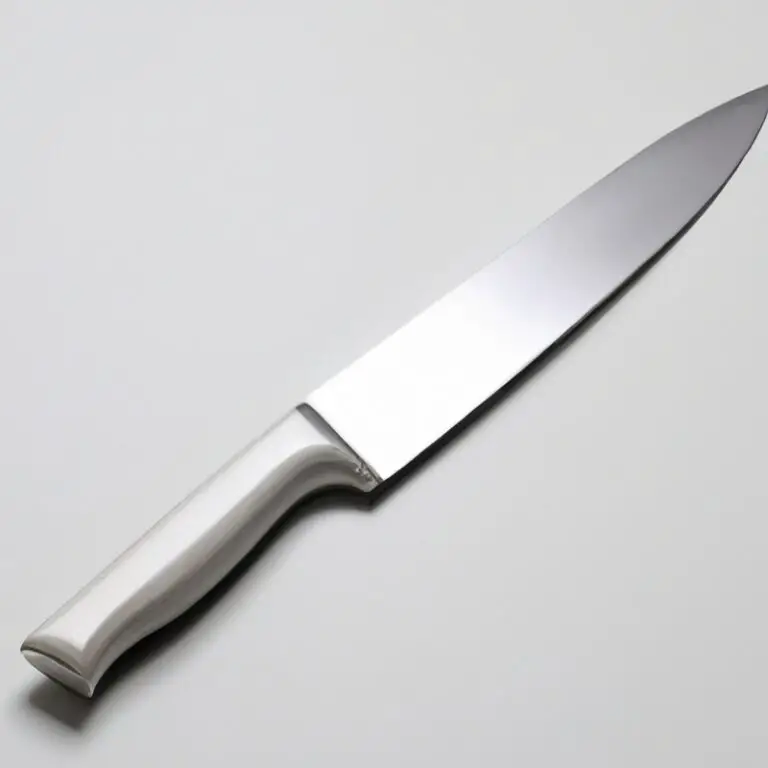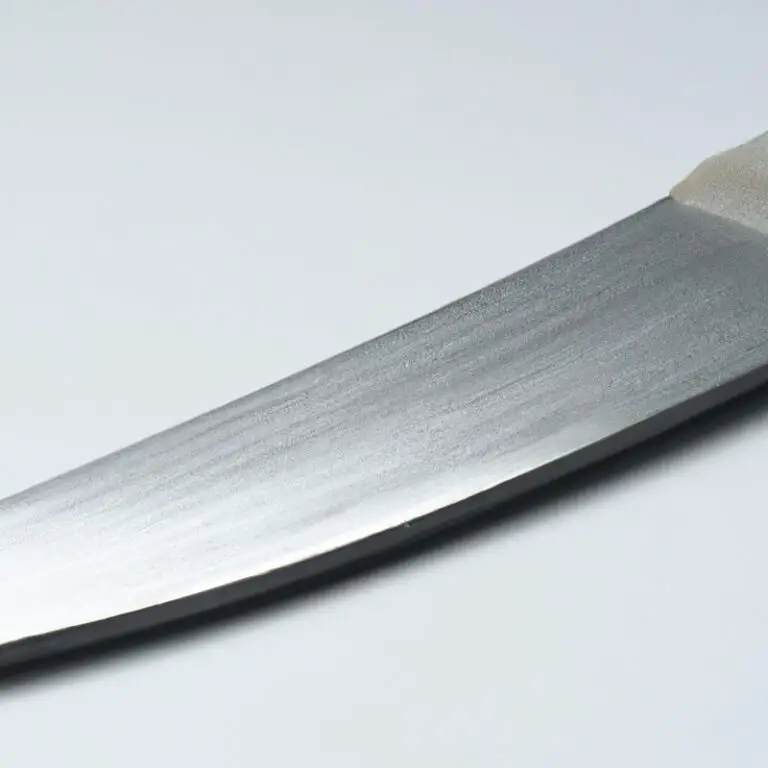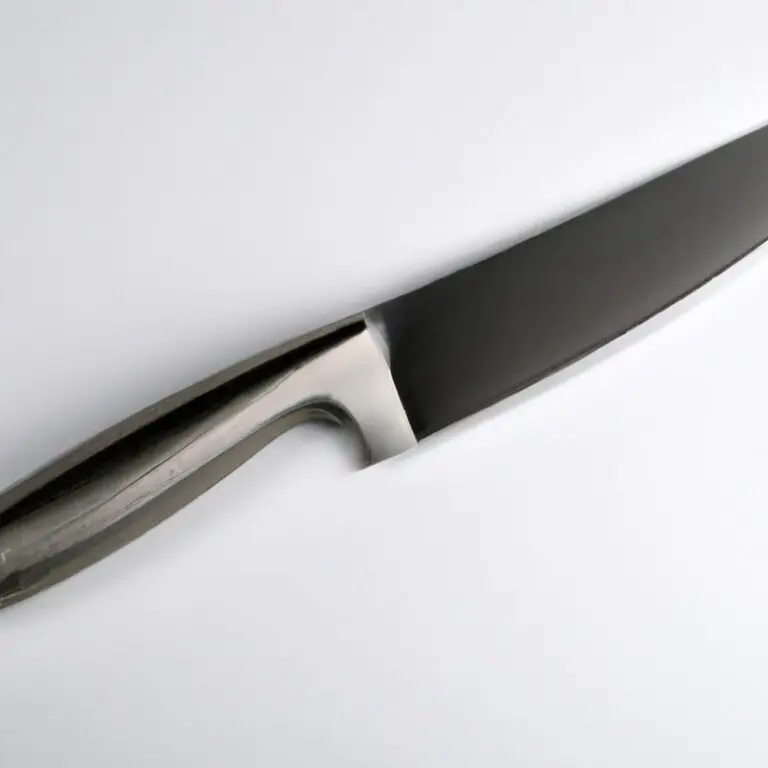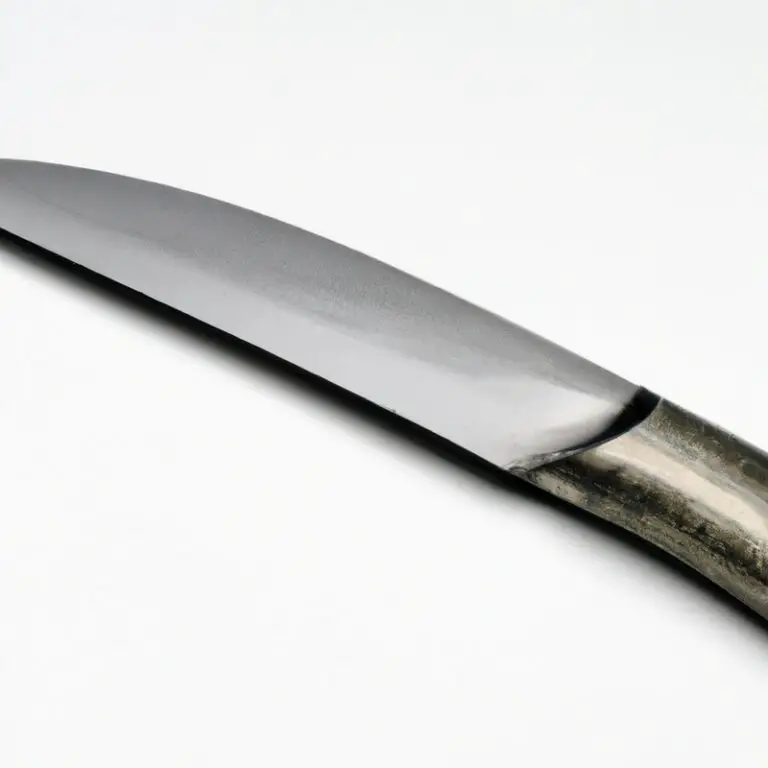What Are The Advantages Of a Full-Tang Construction In a Gyuto Knife? Unbeatable Performance!
Key Takeaways:
- A full-tang construction in a Gyuto knife provides superior balance and control, allowing for more precise cuts.
- The added weight and durability of full-tang knives make them ideal for heavy-duty kitchen tasks and prolonged use.
- Full-tang construction enhances the knife’s overall strength and stability, reducing the risk of blade separation during use.
- Investing in a high-quality full-tang Gyuto knife can result in better cutting performance, improved safety, and a longer lifespan for your kitchen tools.
Imagine holding a knife that feels like an extension of your hand- that is the power of a well-crafted full-tang Gyuto knife. As a chef, I firmly believe that the right knife is crucial to your culinary success.
A full-tang knife is balanced, durable, and easy to maintain, making it the perfect tool for a wide range of tasks.
In this article, we will delve into the world of full-tang construction in Gyuto knives, examining the anatomy, benefits, and factors to consider when choosing one. Whether you’re a professional chef or a home cook, a full-tang Gyuto knife can change the way you approach your craft.
| Advantages | Explanation |
|---|---|
| Better balance and control | The full tang construction extends the weight distribution of the knife from the blade to the handle, providing better balance and control during use. |
| Increased durability | The full tang provides more strength and stability to the knife, reducing the risk of the handle breaking or coming loose over time. |
| Improved cutting performance | The full tang construction allows for more power and precision when cutting through dense and tough ingredients, as there is no weak point where the blade meets the handle. |
| Easier maintenance and cleaning | The seamless full tang design eliminates the risk of food debris getting trapped between the blade and the handle, making it easier to maintain and clean the knife. |
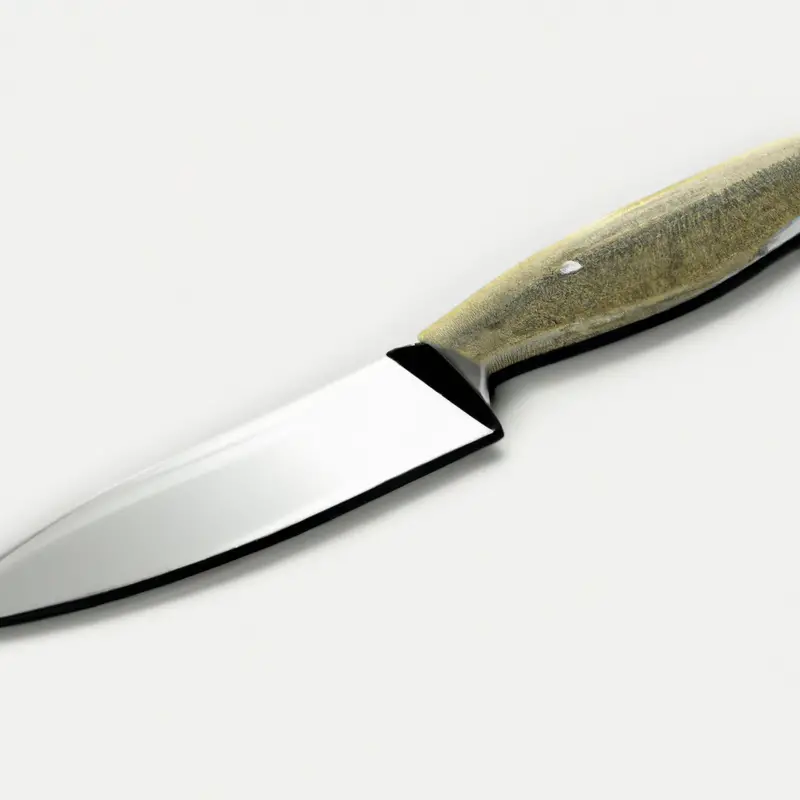
Understanding Full-tang Construction in Gyuto Knives: Benefits and Advantages
A full-tang construction in a Gyuto knife means that the blade and handle are made of a single piece of metal rather than two separate components attached together. This makes the knife more durable, stable, and balanced.
The full-tang construction ensures that the blade is solidly attached to the handle, providing optimal control and grip.
Full-tang knives are preferred for heavy-duty tasks by professional chefs, as they can withstand the pressure and force required for such work. For home use, full-tang knives offer better control, balance, and precision in cutting, allowing for more accurate and efficient slicing and chopping.
Maintaining full-tang knives is crucial for their longevity and performance.
Sharpening techniques are also essential for maintaining razor-sharp edges. When choosing a full-tang Gyuto knife, consider factors such as blade material, handle ergonomics, and weight distribution.
The Anatomy of a Full-tang Gyuto Knife: Key Components and Features
A full-tang Gyuto knife is composed of three key components: the blade, the tang, and the handle. The blade of a Gyuto knife is typically thin and sharp, with a pointed tip and a moderately curved belly.
The tang, which runs through the handle, is the extension of the blade that extends from the heel to the pommel.
In a full-tang construction, the tang extends the full length and width of the handle, making it more durable and stable. In addition to its full-tang construction, there are several features that set a Gyuto knife apart from other types of knives.
For example, the tall blade and gradual curve of a Gyuto knife make it ideal for slicing, dicing, and chopping a wide range of foods, including meats, vegetables, and fruits.
The pointed tip of the blade allows for precision cutting, while the wide heel provides leverage and control. The handle of a Gyuto knife is also an important component, as it must offer a secure grip and comfortable feel for the user.
Handles can be made from a variety of materials, such as wood, plastic, or composite materials.
Some handles are designed with ergonomic features such as finger grooves or a contoured shape to provide additional comfort and control. Overall, a full-tang Gyuto knife offers several advantages over other types of knives due to its durable, stable construction and versatile features.
Experienced cooks and chefs consider the full-tang construction to be a critical factor when selecting high-quality knives for their kitchen.
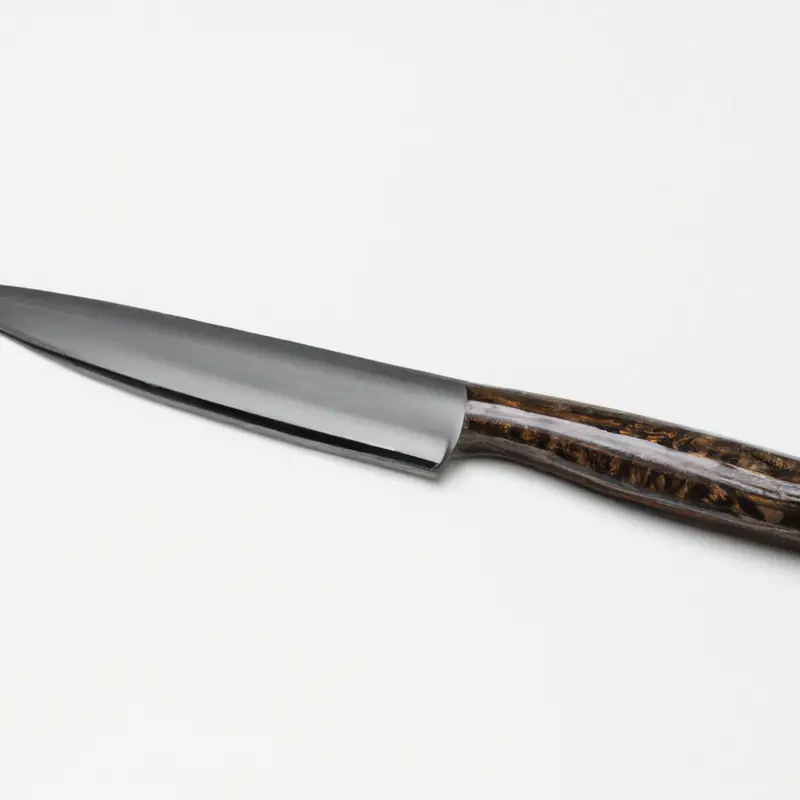
How Full-tang Construction Affects Gyuto Knife Durability, Stability, and Balance
The full-tang construction in a Gyuto knife plays a crucial role in its overall durability, stability, and balance. With a full-tang, the tang extends the entire length of the handle, providing additional strength and support.
This ensures that the blade remains stable while cutting through tough materials and reduces the chances of it bending or breaking.
Furthermore, the full-tang design distributes the weight evenly across the handle, providing optimal balance and control. As a result, full-tang Gyuto knives are more durable, stable, and well-balanced, making them an ideal choice for professional chefs and home cooks alike.
Full-tang vs. Partial-tang: What’s The Difference and Why Does it Matter in Gyuto Knives?
Full-tang refers to a knife construction where the blade runs the entire length of the handle. In contrast, a partial-tang blade only extends partially into the handle.
The significance of full-tang versus partial-tang construction lies in the knife’s balance, durability, and stability.
A full-tang Gyuto knife distributes weight evenly from the blade to the handle, allowing for better maneuverability and control during cutting tasks. Additionally, the robust construction of a full-tang knife ensures better long-term durability and resilience when performing heavy-duty tasks.
Partial-tang knives are often less sturdy and may not offer the same precise control as full-tang knives.
Therefore, investing in a full-tang Gyuto knife is preferable to ensure consistent performance and a longer lifespan.
Choosing the Right Full-tang Gyuto Knife: Factors to Consider When Making Your Decision
When it comes to choosing the right full-tang Gyuto knife, there are several factors to consider. Here are some key factors to keep in mind when making your decision:
- Blade Material: Look for high-quality steel that can hold a sharp edge and resist rust and corrosion.
- Handle Material: Choose a material that is comfortable to hold and provides a good grip, such as durable wood or synthetic materials.
- Blade Size: Consider the size of the blade based on your specific needs and the tasks you’ll be performing.
- Weight and Balance: The knife should be well-balanced and not too heavy or too light for your comfort and control.
- Price: Full-tang Gyuto knives can range in price, so determine your budget and compare prices of different brands.
- Reputation: Research the credibility and expertise of the brand and the knife to ensure its quality and durability.
By considering these factors, you can find the best full-tang Gyuto knife for your needs, whether you’re a professional chef or a home cook.
Full-tang Gyuto Knives for Professional Chefs: Why they are the preferred choice for heavy-duty tasks
Full-tang Gyuto knives are the go-to choice for professional chefs for heavy-duty tasks due to their superior durability, stability, and balance. The full-tang construction provides a single piece of metal extending into the handle, ensuring that the knife remains sturdy and can withstand rigorous use over extended periods.
Unlike partial-tang knives, which may break or loosen over time due to their weaker construction, full-tang knives offer superior longevity and are less prone to failure.
The added weight and balance of full-tang knives also provide better control and precision in cutting, making them ideal for chefs who demand consistent results. Overall, full-tang Gyuto knives are essential tools that can endure daily use in a professional kitchen and provide excellent cutting performance.
Full-tang Gyuto Knives for Home Use: How they offer better control, balance, and precision in cutting
Full-tang Gyuto knives are known for their superior control, balance, and precision in cutting. With a full-tang construction, the blade extends through the entire length of the handle, providing a sturdy and well-balanced instrument.
This design allows the weight to be evenly distributed between the handle and the blade, making it easier to handle and control during use.
The handle of a full-tang Gyuto knife is securely attached to the blade through rivets, ensuring stability and preventing the blade from loosening during use. This results in greater precision and accuracy when slicing or chopping food items, making full-tang Gyuto knives a favorite among home cooks and professional chefs alike.
In addition to their performance benefits, full-tang Gyuto knives are also durable and long-lasting.
The solid construction helps prevent the blade from snapping or breaking, making it an excellent investment for any kitchen. Overall, if you’re looking for a high-quality knife that will offer you better control, balance, and precision in cutting, a full-tang Gyuto knife is an excellent choice for home use.
Maintaining Full-tang Gyuto Knives: Tips and Techniques for Ensuring Longevity and Performance
Maintaining full-tang Gyuto knives is crucial for ensuring their longevity and performance. Here are some tips and techniques to follow:
- Keep the knife clean and dry after use to prevent rust and corrosion.
- Store the knife in a protective case or sheath to avoid damage.
- Regularly sharpen the blade to maintain its sharpness and cutting ability.
- Use a honing rod to straighten the blade’s edge between sharpenings.
- Avoid using the knife for tasks it’s not designed for, such as opening packages or cutting through bones.
- Always use a cutting board when using the knife to prevent dulling or chipping the blade.
- Hand wash the knife with mild soap and water, avoiding harsh detergents or abrasive sponges.
- Dry the knife thoroughly before storing it to prevent mold or mildew growth.
By following these simple tips and techniques, you can keep your full-tang Gyuto knife in top condition for years to come, ensuring a consistent and reliable performance every time you use it.
Sharpening Full-tang Gyuto Knives: Methods and Approaches for Achieving Razor-sharp Edges
To sharpen a full-tang gyuto knife, it is crucial to use high-quality sharpening tools, such as water stones or diamond stones. The first step is to establish a burr on the blade’s edge by using a coarse grit stone.
Afterward, the burr can be removed by honing the opposite side of the blade with a finer grit stone.
The final step is honing the edge to achieve a razor-sharp result. Maintaining a consistent angle is necessary throughout all the steps to ensure uniformity and sharpness.
It’s also essential to keep the blade clean and dry during the sharpening process to avoid any damage to the knife.
By following a regular sharpening regimen, a full-tang gyuto knife can maintain its sharpness and longevity, making it a valuable tool for professional chefs and home cooks.
Full-tang Vs. Other Material Construct Gyuto Knives: Which One Should You Choose?
When it comes to choosing between full-tang and other material construct gyuto knives, there are several factors to consider. Full-tang knives offer better durability, stability, and balance due to the integration of the blade and handle.
Other material construct knives, such as partial-tang or rat-tail tang, are more affordable but are not as sturdy or reliable.
However, if you only need a knife for light home use, then a partial-tang or rat-tail tang knife could be a suitable option. Ultimately, the choice between full-tang and other material construct gyuto knives depends on your usage and budget.
Final Verdict
A full-tang construction in Gyuto knives offers numerous benefits that make it an excellent choice for both professional chefs and home cooks. The added durability, stability, and balance that full-tang knives provide can significantly enhance your cutting experience, making it more precise and efficient.
Choosing a full-tang Gyuto knife depends on your personal needs and preferences, so consider the factors we have discussed in this article to make a well-informed decision.
Remember, maintaining and sharpening your full-tang knife regularly is crucial for ensuring its longevity and performance. By opting for a full-tang Gyuto knife, you can enjoy a high-quality, reliable tool that will serve you well for years to come.
Trust in the advantages of full-tang construction and elevate your culinary skills with confidence.

